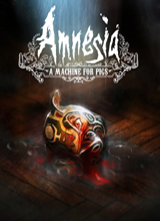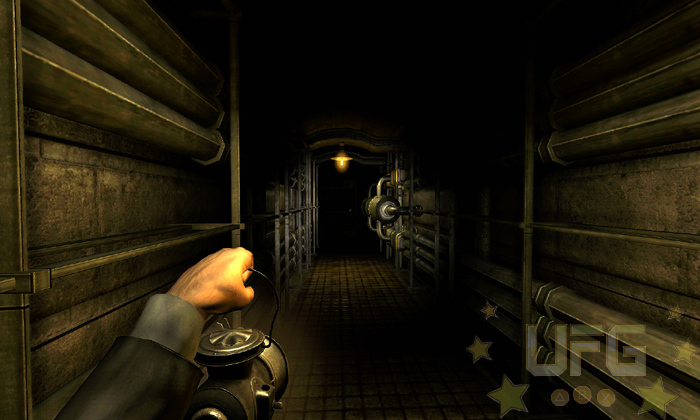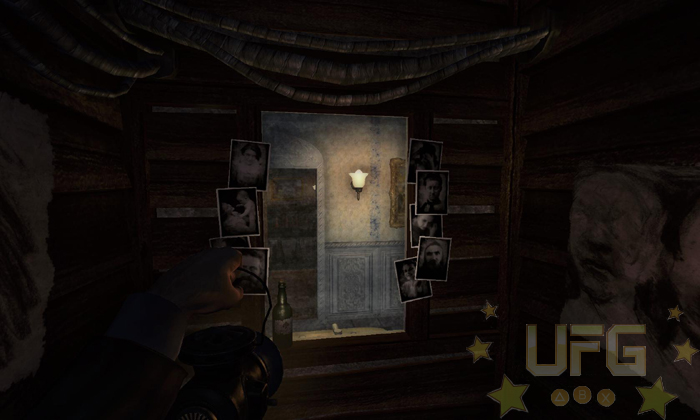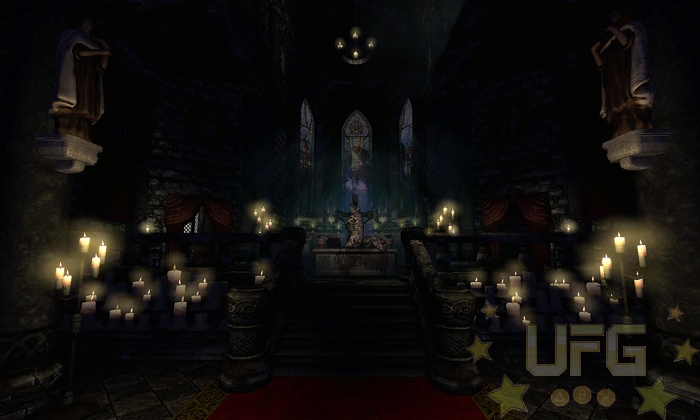Amnesia: A Machine for Pigs
I would imagine that losing your memory for any length of time would have to be a scary experience. Not being able to recognize your love ones or trust that they are who they say they are is frightening on multiple levels. Now take the basic concept of memory loss and add it to the experience of waking up alone in a creepy place you don’t recognize, and you have a truly terrifying story premise! Frictional Games explored this theme in Amnesia: The Dark Decent, resulting in arguably one of the most scary survival horror games ever made.
This is one of the reasons the announcement of Amnesia: A Machine for Pigs was met with equal amounts of enthusiasm and caution. The notion of going through the same type of ordeal in a new, possibly scarier game wasn’t something I necessarily longed for. At the same time, being a fan of survival horror games I wanted to see what was in store for the new protagonist; especially since the role of developer was passed on to The Chinese Room, creators of Dear Esther.
This indirect sequel takes place in London in 1899, sixty years after the first game. It follows the story of a wealthy industrialist by the name of Oswald Mandus. After returning to his mansion from a failed expedition to Mexico, he’s besieged by a terrible fever and decides to rest in his room. Suddenly he is awakes in bed with an unnatural feeling of dread. The house is silent; has everyone left for the night? Getting out of bed and walking around a bit, he notices that his mansion isn’t in the same condition he left it in before falling asleep. Even more disturbing is the fact that his kids aren’t in their beds. And from the looks of things, they’ve been missing for some time. How long has he been asleep? Moments later he feels the rumbling of something below his feet…
Mandus’s journey to find his kids is a treacherous one to say the least. Like the first game though, he’ll have to put the pieces together using found notes, flashbacks, and other means to figure where his kids are. His slow venture into this nightmare has a lasting effect on his psyche; he can no longer decipher what’s real from what’s not. What does become apparent though is that something wicked has been going on as of late. Picture yourself searching for your kids in a large dark mansion with only a small lantern to light your way. You see the faint glow of a table lamp from a room down the hall. Upon entering the room, you head over to a desk with a stack of papers. Looking through them, you see pictures of humans being operated and experimented on. Suddenly there is a loud bang behind you. Spinning around, you briefly catch a glimpse of a shadowy figure. Walking out into the hallway, you’re met with a horrible sight. Tables that lined the hallway have been turned over and there is a trail of blood on the floor seemingly left behind after someone has dragged a body away. None of that was there a few seconds ago. Turning back to reenter the room you were just in you notice that the stack of papers that were sitting on the desk are gone; in their place, a mask of a pig.
What I described above is an example of what could occur during gameplay (it happens differently in the game). I don’t want to spoil too much of the story for you, as the majority of the entertainment value will comes from discovering what has happened, or is happening while being scared out of your mind. I will say that A Machine for Pigs can be downright disturbing at times, but in a good way. The Chinese Room is known for crafting an immersive first person experience. Their talents were well utilized with this title!
What made The Dark Decent (the original Amnesia) great outside of its “imaginative” story was the clever use of sound, light and misdirection. Eerie whispers and far off, yet threatening footsteps created an unsettling atmosphere. Witnessing an altered environment that was different moments ago evokes a unique kind of fear response. With that being said, certain factors hindered the experience. Though a Dark Decent was scary to play through, a lot of the fear tactics were formulaic in their approach. For the most part I knew what to expect, taking the edge off of what might have been some really intense moments. A Machine for Pigs uses these same tactics but with a more refined approach. For example, there are long stretches where nothing happens yet the soundtrack and sights are still ominous, increasingly building tension for the player. So much so, that it can actually wear you down; at one point I was begging for something, anything to happen just so I could relax a little. But, because I was so focused on anticipating something dreadful, I’d be totally blindsided by what was actually meant to scare me. There was one completely unexpected jump scare in particular that made me end my playing session for the night. That’s not to say there weren’t any predictable frights in this game, it’s just means that most were handled better.
The Chinese Room also did away with certain gamey features from the first title. Gone are the sanity levels and having to refill your lantern’s oil. At first this might seem like a bad thing; not having to worry about an untimely end due to the main character’s darkness-induced insanity could make things too easy. Really though, these elements just got in the way. The restriction on the amount of time one could stand in total darkness meant that most of the jump-scares would have to occur in a lighted room; the ones that happened in darkness were quick in passing due to the aforementioned restriction. Also, it meant that your focus was on the wrong things. A dark room wasn’t scary because of what was lurking inside – it was scary because my character would lose it if I went in. The game mechanic overshadowed the horror elements. That’s not the case in A Machine for Pigs.
One thing that I think hurts this series overall is the use of intricate puzzles. Not to say that any one puzzle was really difficult or frustrating in a Dark Decent. It’s just that it was possible to get stuck along the way, removing most of the game’s tension. Once you realize that nothing dangerous will happen until you’ve gotten past a tough puzzle, you’d lose that sense of dread. And while The Chinese Room did a good job of streamlining the puzzles in A Machine for Pigs, making them relatively easy to solve, I unfortunately got stuck early on. This of course led to me exploring every inch of the surrounding environment multiple times. Before long I found myself getting used to the creepy sound effects and random door slams; I had nothing to fear because I couldn’t move the story forward. Now the puzzle itself wasn’t contrived or anything (I’m sure I just missed a clue) and it didn’t outright ruin my experience. Most players probably won’t have too hard of a time and will push on without much difficulty. Still, it’s certainly worth noting.
Beyond that minor gripe is one great survival horror title. The Chinese Room did an excellent job of not only emulating the strengths of the original game but also improving upon them. Though story itself is surreal and disturbing, it does have an interesting view on humanity during that era. Not in terms of new ideals but in how a person addresses that view, and how the means-to-an-end is unique if not outright silly. Basically, the narrative isn’t perfect but it’ll certainly help in developing a cult following. As it stands Amnesia: A Machine for Pigs is a praiseworthy successor to A Dark Decent and should be played by all survival horror fans. Preferably alone with the lights turned out…if you dare!
Gameplay:
10
One scary ride from beginning to end.
Graphics:
8
Though the visuals weren’t drop dead gorgeous, they were great when it came to immersion.
Sound:
10
The sound department did an excellent job with ambient noises. The voice work was superb as well!
What's New:
6
There wasn’t a whole lot new when it comes to the genre outside of the unique setting and plot. That said, the level of immersion made the game feel fresh.
Replay Value:
5
There isn’t much reason to go back through the game. There may be some secrets that further flesh out the backstory but the real thrill comes from going through it the first time!
Final Score:
7.8




